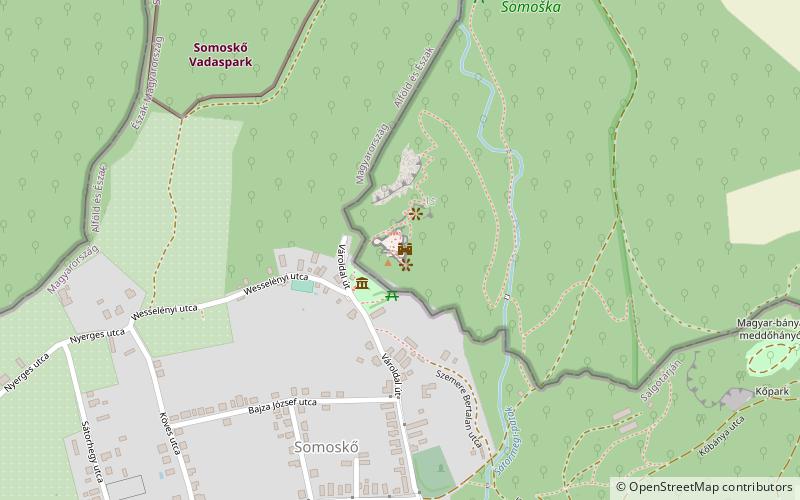Hrad Šomoška


Facts and practical information
Šomoška Castle - ruins of the castle in southern Slovakia, about 12 kilometers south of the city of Fiľakovo. At a distance of only a few dozen meters from the castle, the Slovak-Hungarian border runs.
Located on the basalt hill, the stronghold was founded at the turn of the 13th and 14th centuries Kacsics. The probable date of its creation is considered to be the year 1291. The main building material of the castle were fragments of basalt poles connected by mortar, which was in abundance in the area. In 1310 the castle was in the possession of Mateusz Czak, and after his death, King Karol Robert gave him to Tomasz Szécsény. In 1323 the castle was mentioned as Castrum Somoskw. Originally, it consisted of one residential and defense building and a small courtyard. In the 16th century, the castle was expanded. Barbican and two towers were added, among others. During the Turkish invasions, the Šomoška castle, along with the neighboring castles of Fiľakovo, Salgó and Hajnáčka, served as a border stronghold. From 1554, when the empire lost the Fiľakovo Fortress, he was on the first line of anti -Turkish defense. In the years 1573-1596 the castle was occupied by the Turks. Later, in 1618, and then in 1647-1655 he was strengthened again. During the anti -Habsburg Uprising of Franciszek Rakocz in 1703, the castle was captured by Kurucy, and after his fall in 1709 it was captured and destroyed by the imperial army. He has been a ruin since then.
In 1920, the Trianon Treaty did not determine the course of the Czechoslovak-Hungarian border in this area. Originally, the castle was joined to Czechoslovakia, just like the village of Somoskő located at the foot of the castle hill. However, after the protests of the Hungarian side, the border was corrected and in 1924 the village of Somoskő returned with the neighboring town of Somoskőújfal to the borders of Hungary, while the castle itself remained on the Czechoslovak side of the border. In the seventies of the twentieth century, conservation and partial reconstruction of the ruins were carried out, which are currently available for sightseeing.
The castle hill creates a 160 × 130 m basalt NEK, clearly distinguished by the morphology of the area. On the surface of Neku, the so -called A pole blow in the form of 5- and 6-side columns, the width of which is 15-20 cm. In different parts of the hill, basalt columns are inclined at different angle or are almost horizontally lying - their arrangement is important information for a geologist - reflects the arrangement of the walls of the volcanic chimney during volcanic activity.
Below the castle there is a rock debris with an area of approx. 0.3 ha. It was created as a result of physical ventilation of basalt neku in a periglacial climate. Some blocks were also deposited on the slope during the construction of the castle.
During the construction of the castle, the so -called Rock waterfall Šomoška - a geotouristic attraction unique on a European scale.
In the immediate vicinity of the stronghold, there is a tourist trail and a didactic path, organized in 2002 as part of the PHARE program and providing the above -mentioned attractions. Access is possible from Slovak and Hungarian. From the hill there is a view of the Slovak and Hungarian part of Cerova Vrchovina.
The castle is within the borders of the National Nature Reserve Šomoška and cross-border geopark Novohrad-Nógrád.
Šiatorská BukovinkaŠiatorská Bukovinka 985 58 Banskobystrický
Hrad Šomoška – popular in the area (distance from the attraction)
Nearby attractions include: Hajnáčka Castle.
Frequently Asked Questions (FAQ)
When is Hrad Šomoška open?
- Monday 8 am - 5 pm
- Tuesday 8 am - 5 pm
- Wednesday 8 am - 5 pm
- Thursday 8 am - 5 pm
- Friday 8 am - 5 pm
- Saturday 8 am - 7 pm
- Sunday 8 am - 7 pm

